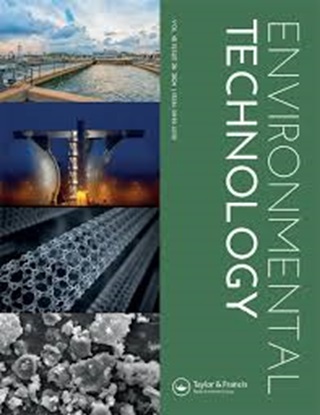Acid precipitation-hydrothermal synthesis of needle-like hydroxyapatite for protein adsorption from waste phosphogypsum.
IF 2.2
4区 环境科学与生态学
Q3 ENVIRONMENTAL SCIENCES
引用次数: 0
Abstract
In order to promote the high-value utilization of waste phosphogypsum (PG), hydroxyapatite was directly synthesized from PG by acid precipitation-hydrothermal method (PGHAP), which was used for the adsorption of bovine serum albumin (BSA) and lysozyme (LYS). The synthesized PGHAP was characterized by XRD, SEM, FTIR and BET, and the effects of various factors on protein adsorption capacity were studied. The results showed that PGHAP exhibits a clear needle-like morphology, high crystallinity, and an average size of about 200 nm. The pH had the greatest effect on the adsorption of protein, and the highest adsorption capacity was obtained at pH 4.0. In addition, the adsorption mechanism of protein on PGHAP was explored by adsorption kinetics and adsorption isotherm. The adsorption of protein on PGHAP conforms to the Intra-particle diffusion model kinetic model, the maximum adsorption capacity of protein on PGHAP can reach 31 mg/g, which is comparable to other adsorbents in this field. In addition, the adsorption behaviour of PGHAP on protein is more appropriately described by Langmuir isotherm model, which indicates that the binding site with uniform energy on the surface of PGHAP realizes the monolayer adsorption of protein. The main adsorption mechanisms are ion exchange, co-precipitation, complexation reaction and so on. Therefore, the needle-like PGHAP synthesized from waste PG is a protein adsorbent with industrial application potential.从废磷石膏中酸沉淀-热合成针状羟基磷灰石以吸附蛋白质。
为促进废弃磷石膏(PG)的高值化利用,采用酸沉淀-水热法(PGHAP)直接合成了羟基磷灰石,并将其用于牛血清白蛋白(BSA)和溶菌酶(LYS)的吸附。通过 XRD、SEM、FTIR 和 BET 对合成的 PGHAP 进行了表征,并研究了各种因素对蛋白质吸附能力的影响。结果表明,PGHAP 具有清晰的针状形态,结晶度高,平均粒径约为 200 nm。pH 值对蛋白质的吸附影响最大,pH 值为 4.0 时吸附能力最高。此外,还通过吸附动力学和吸附等温线探讨了蛋白质在 PGHAP 上的吸附机理。蛋白质在PGHAP上的吸附符合粒子内扩散动力学模型,蛋白质在PGHAP上的最大吸附量可达31 mg/g,与该领域的其他吸附剂相当。此外,PGHAP对蛋白质的吸附行为用Langmuir等温线模型描述更为恰当,表明PGHAP表面能量均匀的结合位点实现了对蛋白质的单层吸附。主要的吸附机理有离子交换、共沉淀、络合反应等。因此,利用废弃 PG 合成的针状 PGHAP 是一种具有工业应用潜力的蛋白质吸附剂。
本文章由计算机程序翻译,如有差异,请以英文原文为准。
求助全文
约1分钟内获得全文
求助全文
来源期刊

Environmental Technology
环境科学-环境科学
CiteScore
6.50
自引率
3.60%
发文量
0
审稿时长
4 months
期刊介绍:
Environmental Technology is a leading journal for the rapid publication of science and technology papers on a wide range of topics in applied environmental studies, from environmental engineering to environmental biotechnology, the circular economy, municipal and industrial wastewater management, drinking-water treatment, air- and water-pollution control, solid-waste management, industrial hygiene and associated technologies.
Environmental Technology is intended to provide rapid publication of new developments in environmental technology. The journal has an international readership with a broad scientific base. Contributions will be accepted from scientists and engineers in industry, government and universities. Accepted manuscripts are generally published within four months.
Please note that Environmental Technology does not publish any review papers unless for a specified special issue which is decided by the Editor. Please do submit your review papers to our sister journal Environmental Technology Reviews at http://www.tandfonline.com/toc/tetr20/current
 求助内容:
求助内容: 应助结果提醒方式:
应助结果提醒方式:


